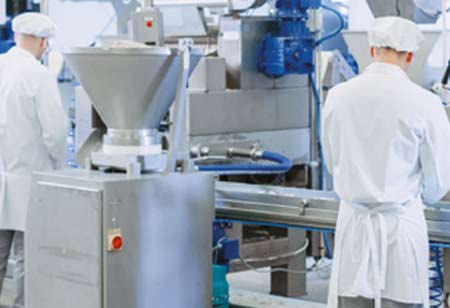THANK YOU FOR SUBSCRIBING
Be first to read the latest tech news, Industry Leader's Insights, and CIO interviews of medium and large enterprises exclusively from Food and Beverage Tech Review
Cutting-Edge Food Processing Technologies
The future of food processing is shaped by technologies prioritizing efficiency, nutrition, safety, and sustainability.

By
Food and Beverages Tech Review | Wednesday, December 11, 2024
Stay ahead of the industry with exclusive feature stories on the top companies, expert insights and the latest news delivered straight to your inbox. Subscribe today.
The future of food processing is shaped by technologies prioritizing efficiency, nutrition, safety, and sustainability.
Fremont, CA: Food processing technologies have evolved significantly in recent years, driven by the need for efficiency, safety, and the demand for high-quality, nutritious products. Innovative technologies in food processing improve production and address concerns such as waste reduction, energy conservation, and food safety. The advancements offer new ways to produce high-quality foods that meet modern consumer expectations, from high-pressure processing and pulsed electric fields to innovative solutions like 3D food printing and precision fermentation.
High-pressure processing (HPP) is a cold pasteurization technique that uses high pressure, rather than heat, to kill harmful bacteria, yeasts, and molds in food products. Unlike traditional heat pasteurization, which can degrade specific vitamins and antioxidants, HPP retains these nutrients, making it a preferred choice for health-conscious consumers. HPP is popular in processing juices, ready-to-eat meats, and seafood, as it extends shelf life without preservatives. As demand grows for minimally processed and clean-label foods, HPP is gaining traction in the food industry as a safe, effective alternative to conventional processing methods.
Ultrasonic processing utilizes high-frequency sound waves to create microscopic bubbles within liquids, resulting in a phenomenon known as cavitation. The process can disrupt cell walls, enhance mixing, and improve extraction, making it ideal for emulsification applications, bioactive compound extraction, and microbial inactivation. The process reduces energy consumption and processing time, making it a cost-effective and sustainable option. Ultrasonic processing is used in the meat industry to tender meat without chemicals or prolonged aging periods, offering both time and cost benefits.
Pulsed Electric Field (PEF) technology involves applying short high-voltage bursts to foods between two electrodes. It disrupts the cell membranes of microorganisms, effectively inactivating them and extending shelf life without affecting the food's natural properties. PEF is particularly effective for liquid foods like juices, milk, and liquid eggs, as well as for softening plant tissue, which enhances juice yield from fruits and vegetables. PEF is known for its energy efficiency compared to traditional thermal pasteurization methods, making it an eco-friendly alternative. PEF processing preserves nutrients and flavors that would otherwise be lost in heat treatment, resulting in a higher-quality product.
Cold plasma processing is an innovative technique used primarily for surface decontamination, where ionized gas destroys bacteria and pathogens on the food surface. Cold plasma uses reactive species generated at room temperature to sterilize surfaces, making it ideal for fresh produce, meats, and packaging materials. Unlike heat-based methods, cold plasma leaves the food's quality and nutritional value intact while achieving a high level of microbial control. As a non-thermal process, cold plasma is highly energy-efficient and environmentally friendly, aligning with industry trends toward sustainable food processing.
3D printing technology transforms food design and personalization, enabling customized textures, flavors, and nutritional profiles. 3D printers can create intricate shapes and structures that are otherwise impossible with conventional processing methods using paste, powder, or liquid ingredients. The technology is especially relevant in producing custom nutrition for dietary needs and creating sustainable food sources like plant-based and alternative proteins. 3D printing reduces food waste by allowing precise ingredient usage and enabling the repurposing of surplus materials.
I agree We use cookies on this website to enhance your user experience. By clicking any link on this page you are giving your consent for us to set cookies. More info


However, if you would like to share the information in this article, you may use the link below:
https://www.fbtechreviewapac.com/news/cuttingedge-food-processing-technologies-nwid-1918.html





